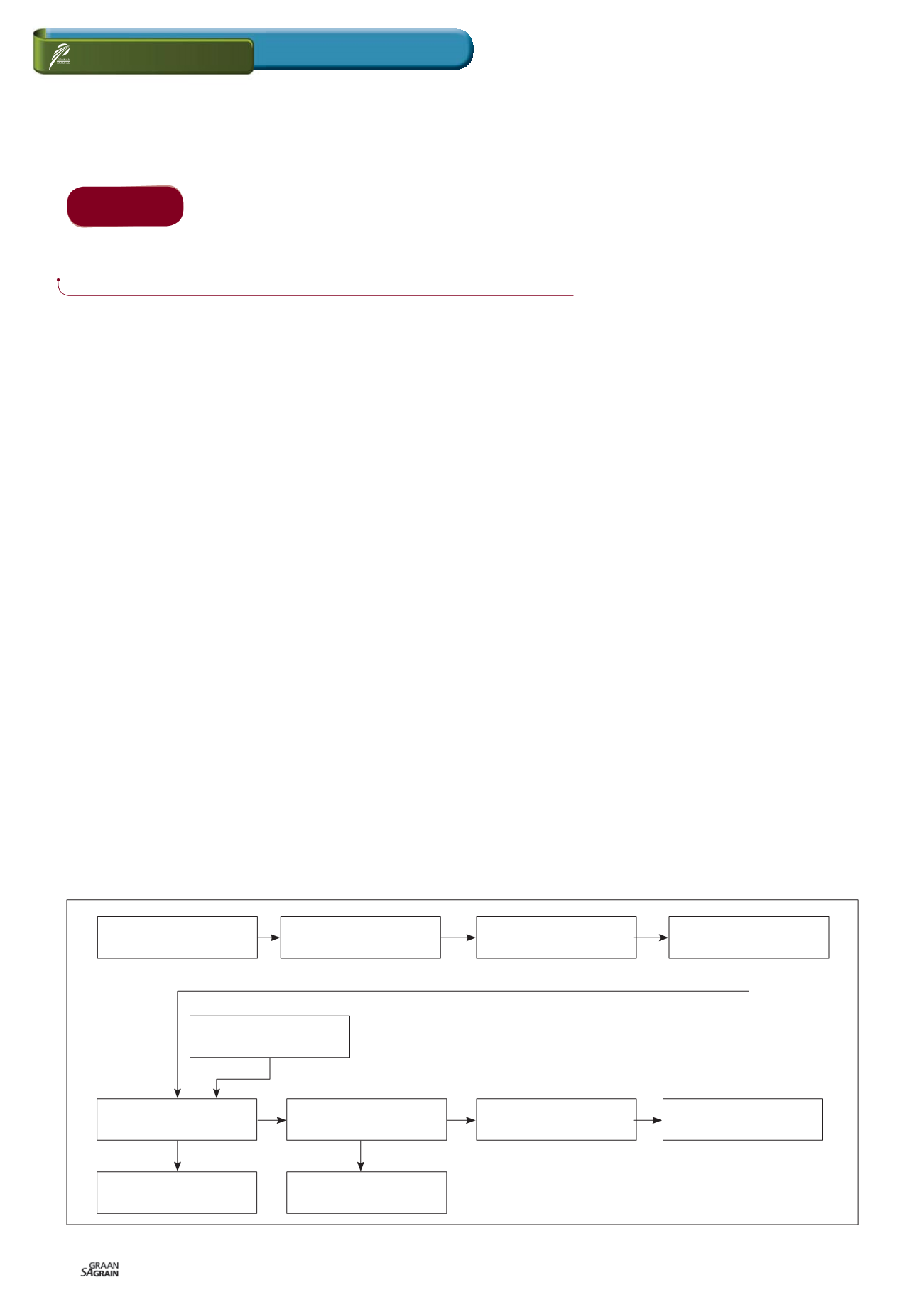

Maart 2018
106
Factors affecting price of maize meal
S
outh Africa has processed between
4,095 and 4,361 million tons of
white maize for human consump-
tion over the past three years.
This constitutes between 75 kg and 81 kg
of white maize per capita per year for this
period. Therefore, white maize plays a vital
role with regards to food security. The white
maize meal value system is highly complex
and contributes to the wellbeing of a lot of
South Africans. Low-income groups are
highly dependent on white maize meal in
South Africa.
South Africa experienced very high white
maize prices through the 2016/2017 sea-
son due to a shortage of maize in one of
the worst droughts ever. The maize price
in South Africa can also be highly volatile.
Many role-players in the market argue that
when white maize prices decrease, the price
of maize meal does not react at the same
pace as when it increases. The industry is
also highly competitive and concentrated
and provides a huge differentiation of prod-
ucts with regards to size of package and
type of meal.
This article is the first of two articles on
maize meal. This article elucidates the maize
meal industry, the value chain and the fac-
tors affecting maize meal prices in South
Africa. The second article will provide in-
sight on the trend of maize prices and white
maize meal prices as well as on how maize
meal prices is monitored. It also explains
how the National Agricultural Marketing
Council calculates the farm to retail price
spread and the farm value share in maize
meal and also lists the challenges and po-
tential for improvement.
Maize meal producers
and capacity
According to
Who-Owns-Whom
(WOW)
South Africa has an average milling capacity
of 3,7 million tons. According to the Depart-
ment of Agriculture, Forestry and Fisheries
(DAFF), the potential capacity is approxi-
mately 5 million tons. The top 20 milling
companies produce more than 80% of the
maize meal consumed in South Africa.
Who-Owns-Whom
(WOW) reported that
the leading four role-players, namely Pio-
neer, Premier Foods, Pride Milling and Tiger
Brands together mill approximately 75% of
the maize meal produced in South Africa.
The agro-processing unit of the Department
of Trade and Industry (DTI) established 24
new micro mills from 2013 to 2015. Their ca-
pacity is unknown.
In South Africa close to 200 maize millers
are registered with the South African Grain
Information Service (SAGIS). These millers
need to report stock and production figures
to SAGIS monthly. The millers can be di-
vided into three tiers, namely mega millers,
medium size millers and micro millers or in-
formal millers.
The market share of the top 75% millers is
illustrated in
Table 1
.
Usage of white maize
White maize is mainly used to produce
white maize meal. Various types of white
maize meal for human consumption fea-
ture in the South African market. The most
popular is super, followed by special maize
meal. Due to the different extraction rates,
the price between these two types of maize
meal differ.
White maize can also be used in the feed
market, depending on the price. In the past
white maize normally traded above yellow
maize prices. This phenomenon changes
when a surplus of white maize is produced,
as was the case in the 2017/2018 marketing
season.
The value chain of the
white maize milling
industry
It is also important to understand how the
value chain functions to better understand
how prices are formed at the different levels
of distribution. The value chain is well devel-
oped and in certain parts highly concentrat-
ed. I shall only refer to white maize milling.
The value chain is depicted in
Figure 1
.
RELEVANT
DR CHRISTO JOUBERT,
manager: Agro Food Chains, Market and Economic Research Division,
National Agricultural Marketing Council
Part 1
Research and
biotechnology
Imports of whole
maize
Input suppliers
Local market
Wholesale
Retail
Maize milling
industry
Exports of whole
maize
Exports of maize
products
Producers
Storage in silos
Figure 1: The value chain of the white maize milling industry.
















